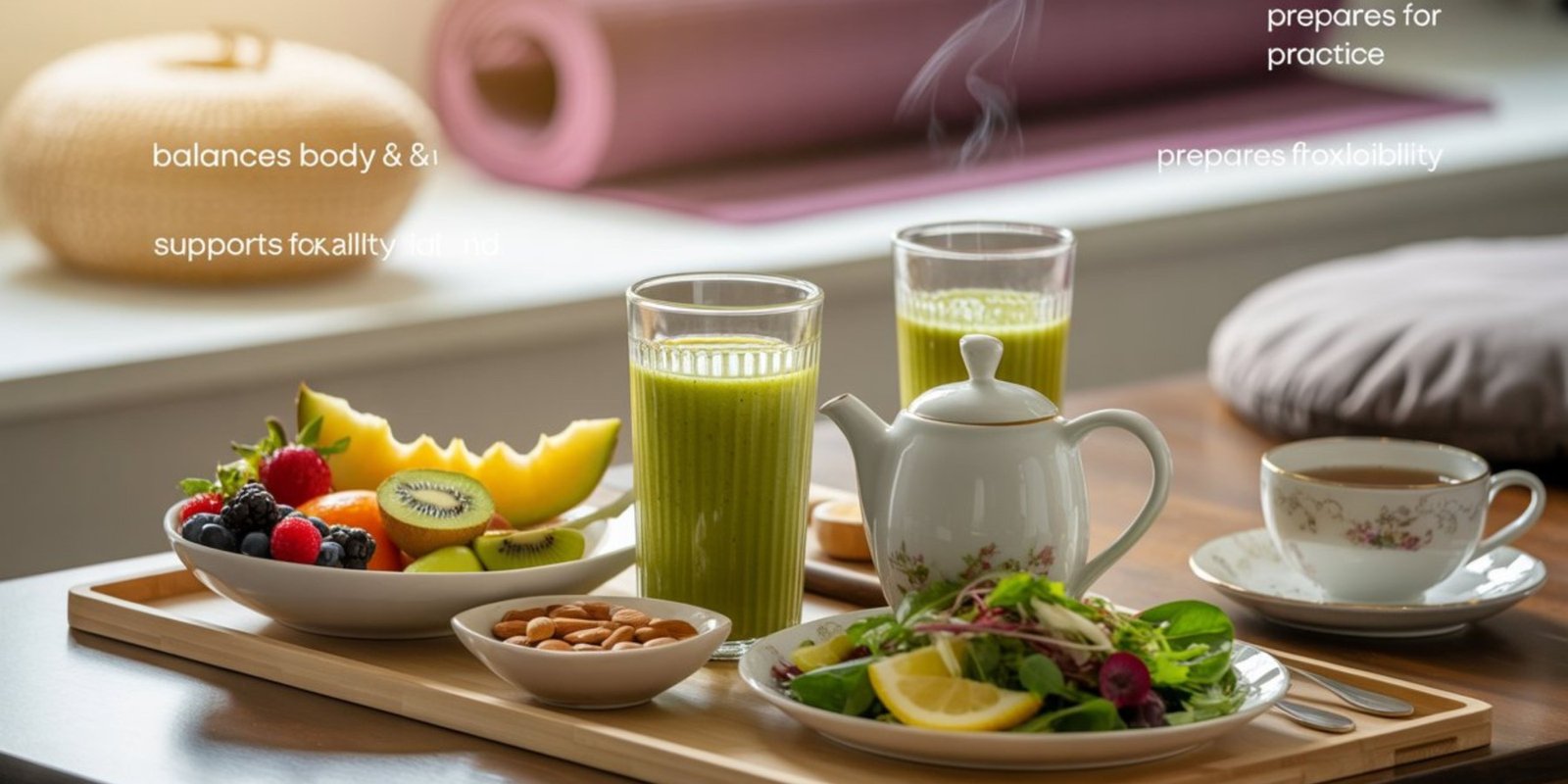

Dt. Natasha Mohan
Dietitian Natasha Mohan is one of the most influential and renowned nutritionist and dietitian, with over 3 Million Followers on YouTube and 200+ Million Views and with 10+ Years of Experience. Dietitian Natasha Mohan is a transformation expert, Motivational Speaker and Lifestyle Expert. She has touched million of lives. She specializes in Therapeutic Diets Like, PCOS/PCOD, Thyroid, Diabetes, Cholesterol, Blood pressure, and other lifestyle disorder.
Table of Contents
Best Diet for Yoga: Top Foods to Boost Your Practice
If you’re serious about enhancing your yoga journey, understanding the best diet for yoga is just as important as your daily asanas. The right food fuels your body, balances your energy, and keeps your mind calm and focused—essentials for any yogi looking to go deeper in their practice.
Why Diet Matters in Yoga
Yoga is more than physical movement; it’s a holistic discipline that integrates the body, mind, and spirit. Just as certain poses improve flexibility or reduce stress, the right foods can optimize your body for performance and recovery. A yogic diet is usually light, plant-based, and sattvic (pure and balanced), helping you feel energetic but not heavy, focused but not agitated.
Top 8 Foods to Include in the Best Diet for Yoga
1. Fresh Fruits
Fruits are rich in vitamins, antioxidants, and water content. Bananas, apples, papayas, and berries are great pre-yoga snacks. They provide quick energy and support digestion.
2. Leafy Greens
Spinach, kale, and moringa leaves are loaded with iron, calcium, and fiber. These help strengthen your muscles and bones, making them ideal for those who practice yoga regularly.
3. Nuts and Seeds
Almonds, walnuts, chia seeds, and flaxseeds are excellent sources of protein, omega-3 fatty acids, and magnesium. These nutrients aid in muscle recovery and brain function.
4. Whole Grains
Brown rice, quinoa, oats, and millets offer long-lasting energy and regulate blood sugar levels. They’re complex carbohydrates that keep you full and grounded during and after your yoga sessions.
5. Herbal Teas
Replace caffeine with herbal teas like tulsi, ginger, or chamomile. These help calm your nerves, support digestion, and hydrate your body, which is especially important in intense yoga routines.
6. Ghee (Clarified Butter)
An Ayurvedic superfood, A2 cow ghee is a great addition to a yogic diet. It lubricates joints, boosts immunity, and enhances digestion when consumed in moderation.
7. Moong Dal (Green Gram)
This light lentil is high in protein and easy to digest, making it a preferred protein source in the best diet for yoga. You can prepare it as a soup or with rice for a balanced meal.
8. Coconut Water
Hydration is key. Coconut water restores electrolytes and cools the system. It’s a natural energy drink, perfect post-practice.
Foods to Avoid Before Yoga
A yogic diet emphasizes mindfulness, not just in eating, but also in avoiding the wrong foods. Stay away from:
Heavy meals right before your session
Caffeine and energy drinks that increase restlessness
Fried or oily foods that can cause sluggishness
Meat and processed foods that are considered tamasic (lethargy-inducing)
When Should You Eat for Yoga?
Timing is just as important as food. Here are some suggestions:
Eat a light meal 1.5–2 hours before yoga.
A fruit or nut snack is fine 30 minutes prior.
Drink water throughout the day but avoid gulping large quantities just before class.
Sample 1-Day Meal Plan Based on the Best Diet for Yoga
Morning (Pre-Yoga):
Warm water with lemon
A banana or a few soaked almonds
Post-Yoga Breakfast:
A bowl of oats with fruits and chia seeds
Herbal tea
Lunch:
Brown rice with moong dal and sautéed vegetables
Buttermilk or a small glass of coconut water
Snack:
A fruit smoothie or sprouts salad
Dinner:
Quinoa with steamed veggies and ghee
Warm turmeric milk
The Role of Mindfulness in Eating
Yoga encourages mindful living—and eating is no exception. Chew slowly, avoid distractions like phones or TV, and express gratitude before meals. Mindful eating enhances digestion and keeps you in sync with your body’s needs.
Final Thoughts
Choosing the best diet for yoga doesn’t mean strict food rules—it means eating clean, light, and energizing foods that support your practice and nourish your well-being. Simple, protein-rich options like the Masala Chaap Roll Recipe can provide sustained energy without feeling heavy. By integrating these food choices into your lifestyle, you’ll experience better flexibility, sharper focus, and deeper inner peace both on and off the mat.
Yes, but only light food like fruit or soaked nuts at least 30 minutes to 1 hour before.
Traditionally, yes. A vegetarian, sattvic (pure) diet aligns with yoga’s spiritual and health goals.
Coconut water, herbal teas, or plain water are excellent choices to rehydrate.
Prefer natural sources like moong dal, lentils, and seeds. Avoid artificial powders unless necessary and approved by a nutritionist.
3 balanced meals and 1–2 light snacks are ideal to keep energy levels stable during yoga practice.


